Tannoy GRF Rectangular Horn cabinet
This is the second GRF I have built, having completed the massive GRF Corner Horn last year.
The approach I use is consistent with all my
speakers – and relies on CNC’ing a series of identical ‘slices’ to form the
complete horn block.
In some models, built-in braces are included in the
slices. For the GRF-R, two such brace slices were included.
Each slice also has computer-cut dowel holes to ensure 100% alignment of slices.
10mm Oak dowels are used, along with standard PVA glue. This sort of build is a great DIY’ers project.
For this project, I used the various drawings
from the net of the GRF-R. The final measurements were 1070mm tall x 500mm
wide x 550mm deep.
Each cabinet weighs close to 100Kgs. (I have offset a
little of width and added this to the depth, aiming to retain the same horn
volume and mouth size.)
14 individual 32mm MDF slices make up the
internal slices. Outer panels are 19mm MDF. The front baffle is 40mm thick.
Wool sound deadening material is used in all the cavities.
I have added a thin layer of felt to the
cut-out of the second cut-out to seal the back of the driver.
The fit is
very snug…and the driver can sit in place even without mounting screws.
I have CNC’ed a front speaker cover, which
can be veneered or covered in audio cloth.
I’m not sure what I’ll do to
finish this aspect off…preferring to keep the driver exposed. I would also
like to keep the horn mouth exposed.
I will add a piece of 2mm veneer to the
inside of the horn mouth to tidy things up there.
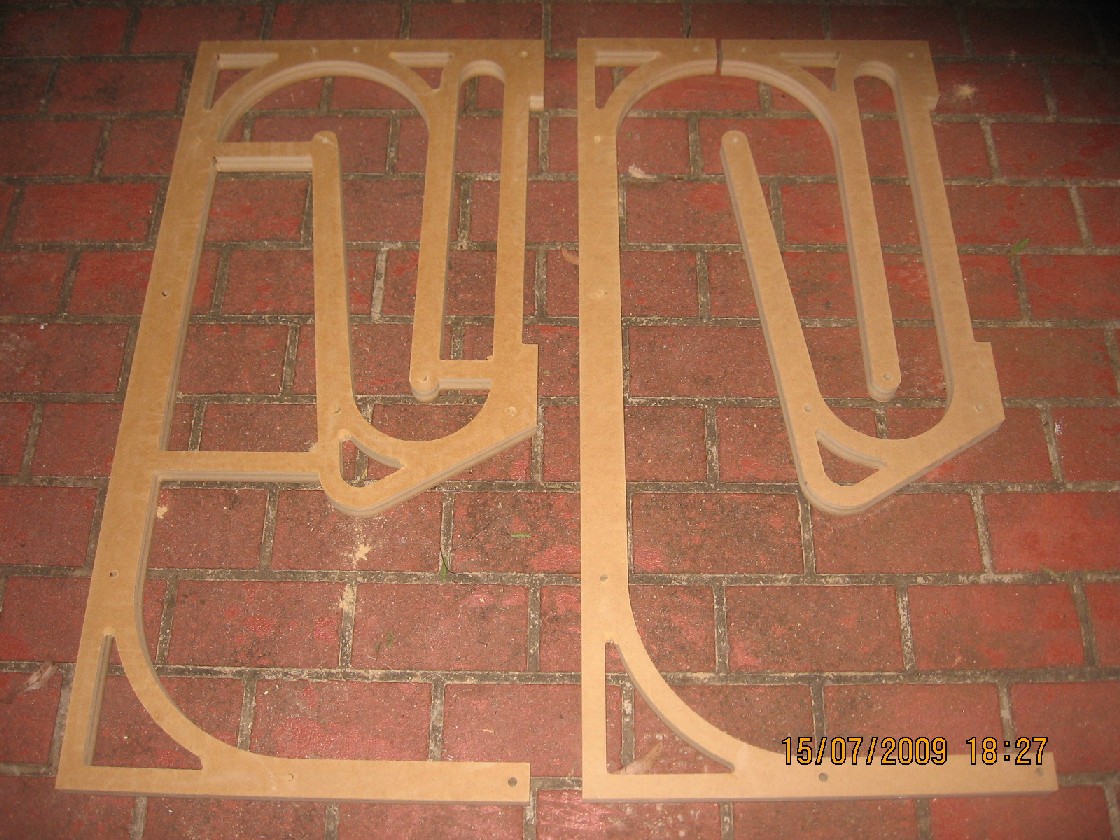
I have used spiked audio foam to the top and upper sides of the comp chamber.
Using the design from Laurents’s cabinets
(see here
http://www.hilberink.nl/codehans/tannoy31.htm
) I hand shaped the ‘tear drops’ out of
hardwood. This was a tricky
process…using a circular saw and rasp to obtain the desired shape. The
finished measurements were approx
50mm x 100mm. The ‘blocks’ were then cut
in half to allow fitting. I also had to carve out some material so the
blocks could sit on top of the
internal brace supports in the cabinet. I
have temporarily nailed these blocks in place while I undertake further
listening tests….but I am
VERY happy with the immediate improvement these
made. The sound stage moved way back; and the bass became considerably
tighter/punchier, while loosing nothing to the incredible depth already
there.
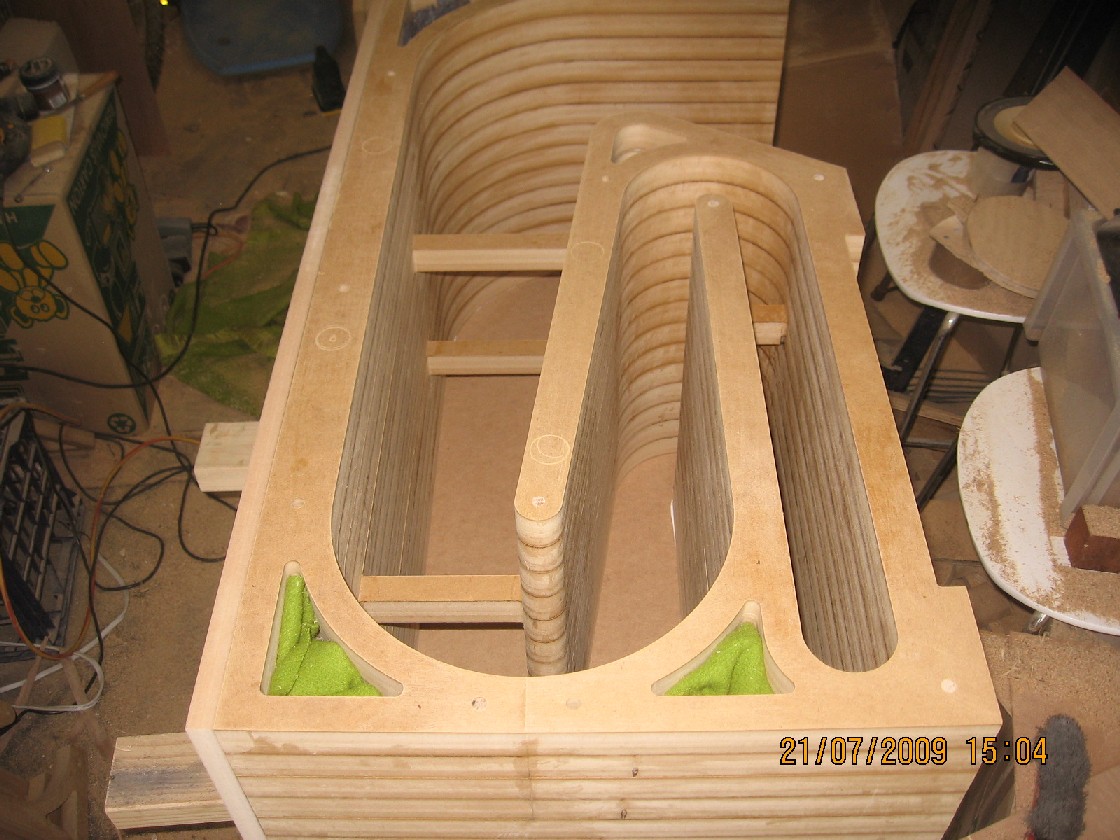
I am presently using HPD Royals (Canadian
special edition), with the original Tannoy cross-overs. These seem to work
very well.
I have the settings on middle for both roll-off and energy. I may
hard-wire these later. The cross-over housing is temporarily sitting
on one
of the internal brace ‘ledges.’ Internal cabling has been sealed using
Blue-Tak until I complete the cabinets fully.
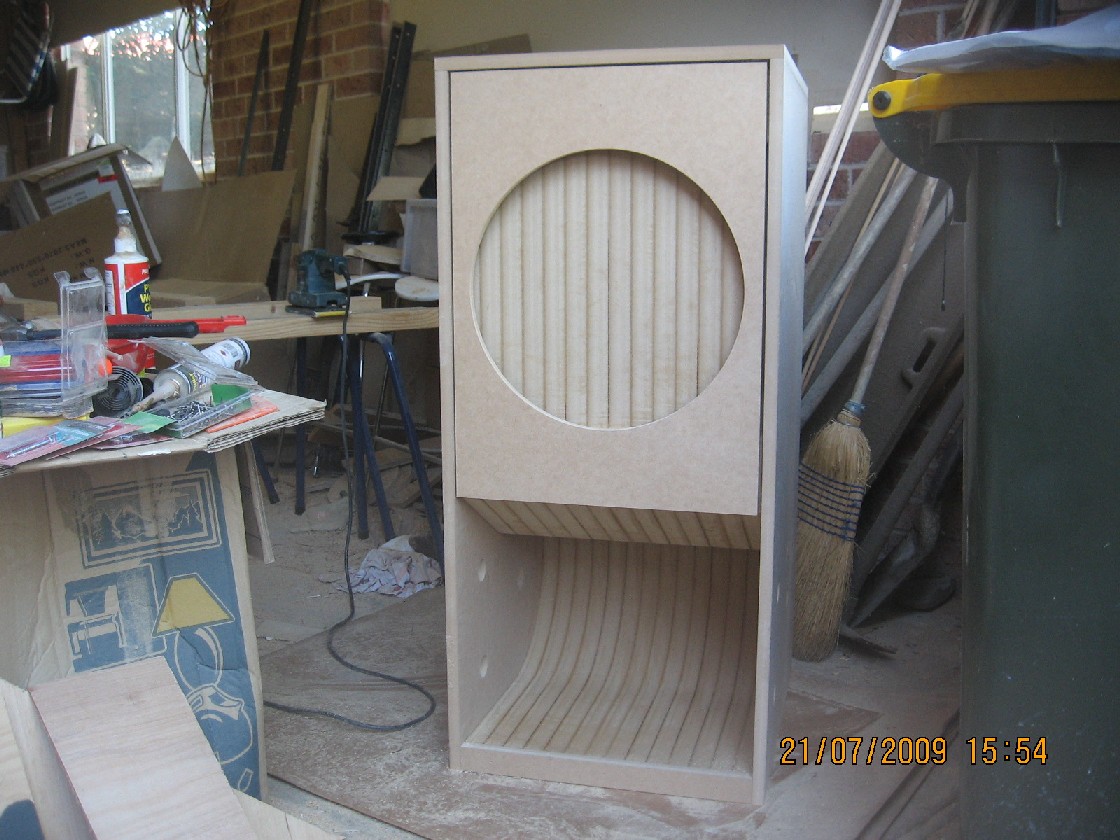
On the assembly side, I simply glued up the
14 slices in one sitting, using a consistent bead of PVA between slices. I
use 7 or 8 “F” clamps,
plus 2 or 3 larger pipe clamps to ensure the slices
are pulled together nicely. I allow a min of 24 hours before the clamps are
removed.
The outer panels are all computer cut to the
exact size. These are glued in place, using thin tack nails to align the
panels as the glue dries.
The nails are then tapped in and puttied over.
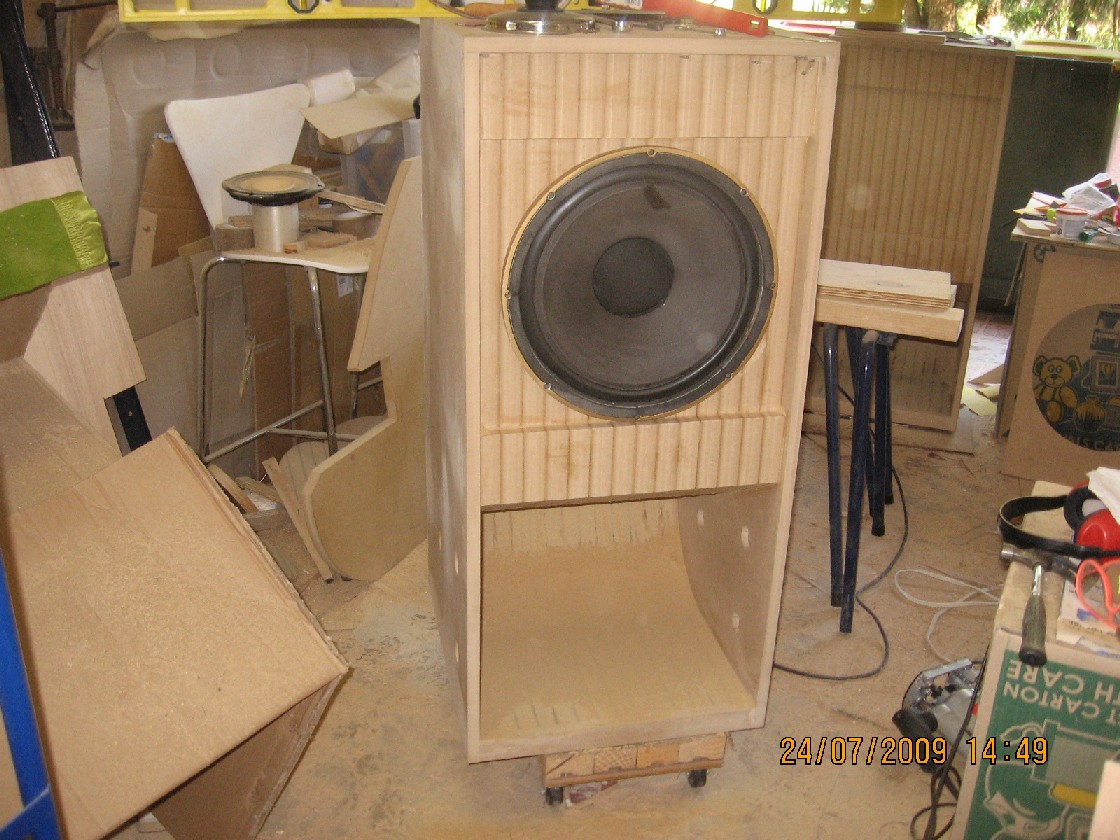
When preparing the driver cut-out, I use a
standard jig-saw…but the shape of the front section, makes the use of the
jig-saw tricky.
For future builds, I will incorporate a front baffle made
from 25mm ply, with a computer-cut hole already prepared.
This panel will
then be glued/clamped into place. The same approach will be used for the
cut-out behind the front panel…
where the back of the driver resides.
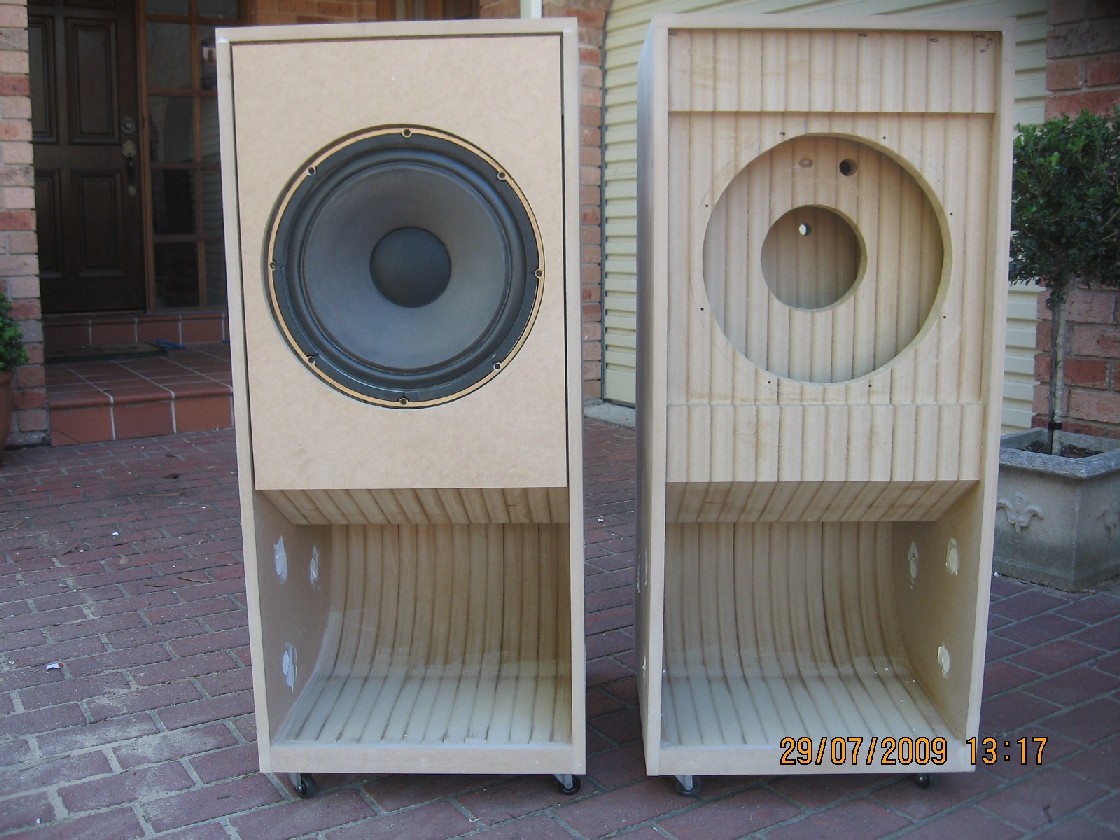
I use standard bolts and T-nuts to house the driver securely.
I have also fitted small trolley wheels to
the underside of the cabinets. These have been invaluable…especially when
finishing the cabinets
and for room placement when listening to music.
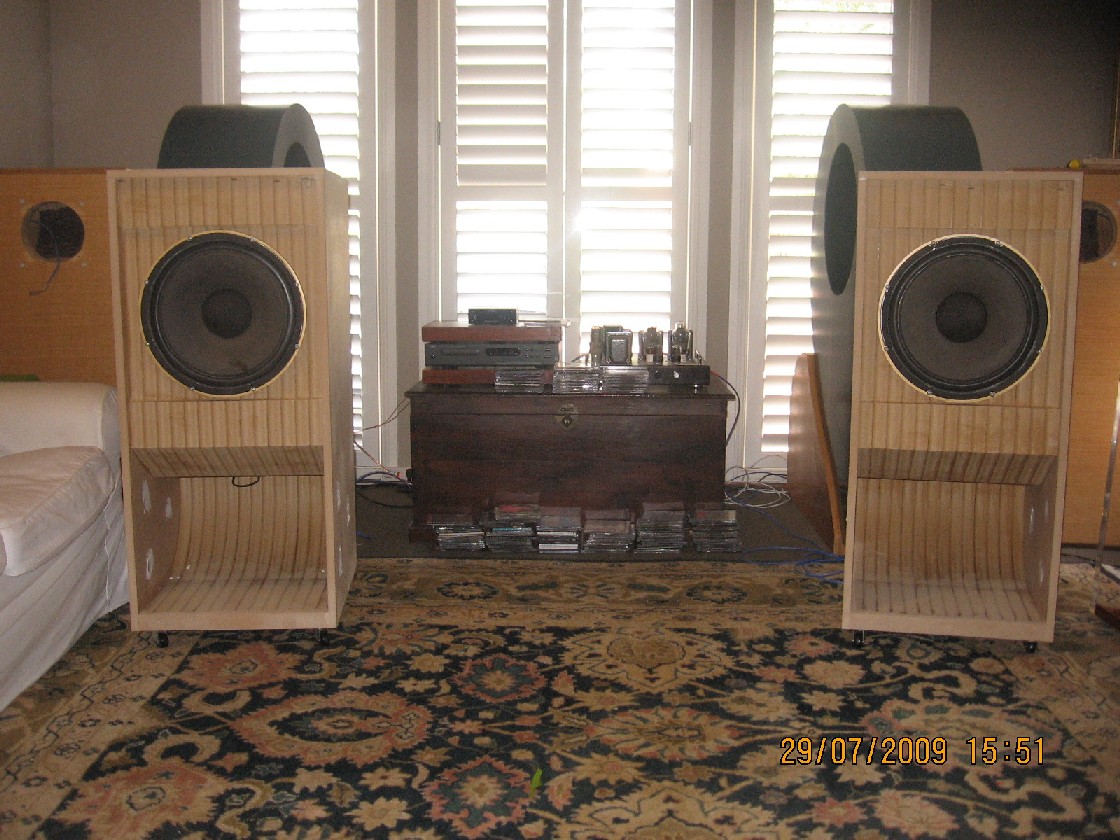
Braided solid-core Cat-5 cable is used.
Coming from single-driver speakers (Lowther,
Carfrae, Fostex etc), I must say I’m enjoying the sound quality of the big
Tannoys.
The low and powerful bass response is very beguiling. The imaging
is very good, though not as sharp as the Lowthers, obviously.
I tend to
listen to easy blues, vocals, instrumentals, and the Tannoys produce a
lovely open sound. It can certainly fill the house
with great volume when
required, with little distortion. All this from a lovely 300B SET amp with a
meagre 8 watts/RMS.
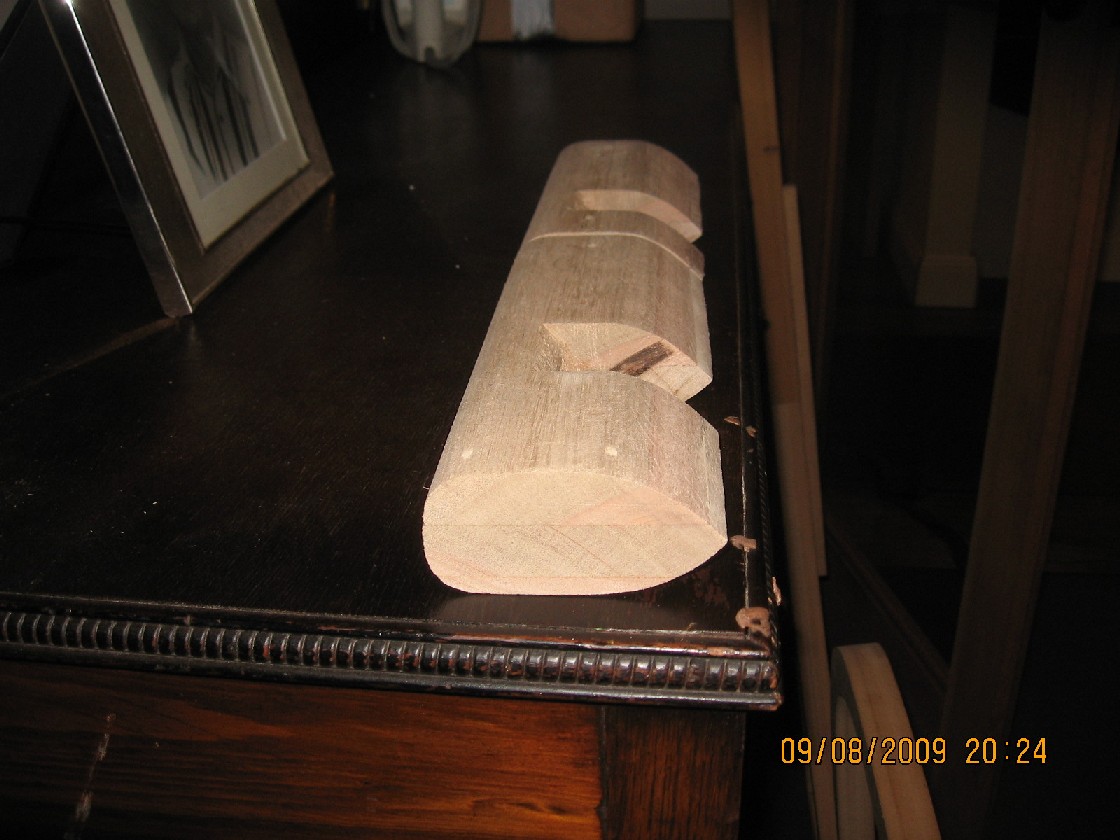
I’m happy…!
Andrew Tilsley.
www.creationaudio.com.auSydney, Australia.